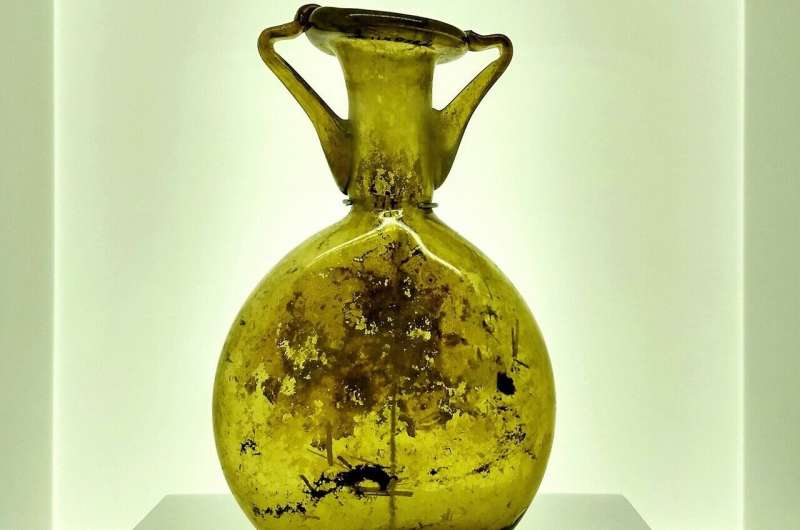This article has been reviewed according to Science X's editorial process and policies. Editors have highlighted the following attributes while ensuring the content's credibility:
fact-checked
trusted source
proofread
From ancient apothecary to modern medicine

Throughout history, humanity has used nature's pharmacy for healing. In exploring nature as a source of shelter and food, early humans fortuitously discovered the therapeutic properties of plants, with many of today's drugs having their roots in ancient knowledge.
Adaptive memory, the ability to remember important information needed for survival, played an essential role in this process of discovery. After experimenting with various plants, our ancestors were able to remember which ones worked for their ailments and where to find them, giving them a remarkable edge in the game of survival. With each triumphant discovery of a plant with healing properties, their memory eagerly catalogued the plant's powers, creating a survival guidebook that would be passed down through the ages, forming the ultimate foundation for the development of modern medicine.
One crucial plant discovery included the African yellow star (Hypoxis angustifolia). Widely distributed throughout southern Africa, it is also found in abundance around the Sterkfontein Cave, one of the important archaeological sites in the country. It is likely that our hominid ancestors in South Africa were the first to discover the nutritional and medicinal properties of the African yellow star.
The herbaceous plants feature pretty, yellow flowers, sickle-shaped leaves and bulbous rhizomes that are good to eat once cooked. Wits University studies have shown that it was cooked and consumed as far back as 170,000 years ago.
"It has small rhizomes with white flesh that is more edible than the bitter, orange flesh of rhizomes from the better known medicinal Hypoxis species which is incorrectly called African Potato. The part of the plant used for medicine is not a potato, which is a tuber, but a corm," says Dr. Christine Sievers, an Archaeobotanist in the Wits School of Geography, Archaeology and Environmental Studies.
"Plant remains are rarely well-preserved and there is no direct evidence that people living around 170,000 years ago were aware of the medicinal properties of species such as Hypoxis hemerocallidea. There is, however, widespread evidence of animal self-medication. This is likely to be shared evolutionary behavior and suggests that people had knowledge of the healing power of plants at least during the Middle Stone Age (280,000 to about 50,000 years ago), and very likely much earlier in our evolution," she says.
Once the healing properties of plants were discovered, early humans were extremely resourceful.
With the discovery of the medicinal properties of plants came the realization they could be used to keep pesky bugs away, evidenced by insect-repelling plants found in 77,000-year-old preserved bedding from a cave in South Africa. Today, communities continue to rely on many plants, including the Hypoxis species, for traditional medicine, treating various ailments.
Safeguarding the future of Indigenous medicinal plants
Scientists have recently delved into the use of ancient medicinal plants, collaborating with local communities to unveil their biochemical properties and potential applications. This interdisciplinary approach blends traditional knowledge with modern scientific techniques, opening exciting drug discovery and development avenues. However, the rising popularity and commercialization of traditional medicine has led to the overexploitation and depletion of certain species.
Alarming statistics from the South African Health Review report indicate that out of 2,062 plant species used for traditional medicine, approximately 32% have been recorded in traditional medicine markets, with 4% currently under threat. Unsustainable harvesting practices, habitat destruction, and the impacts of climate change further compound conservation issues, putting many medicinal plant species at risk of endangerment or even extinction.
We need to safeguard not only the plants themselves but also the ecosystems that nurture them, the habitats that harbor them, and the cultural landscapes that shape our understanding and practices of healing. Recognizing the historical, spiritual, and ecological significance of these environments is essential for preserving the integrity and resilience of traditional medicine systems.





















